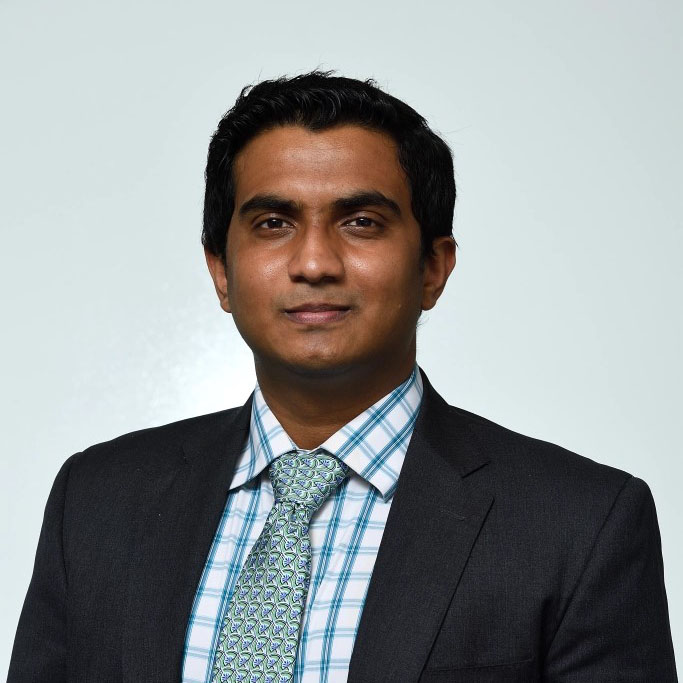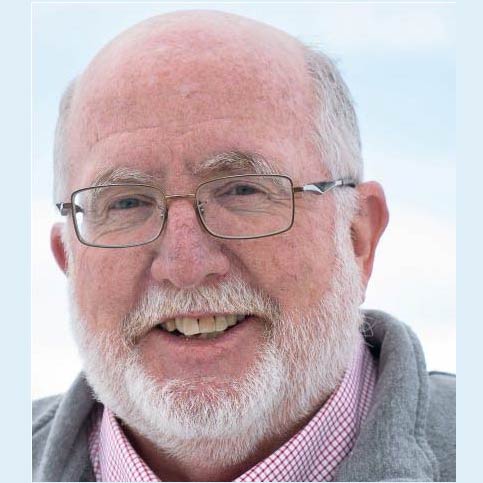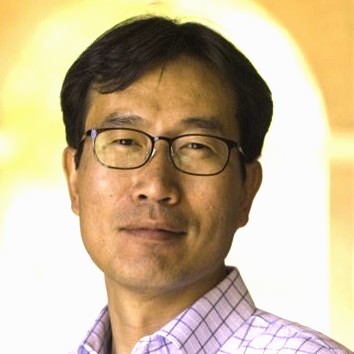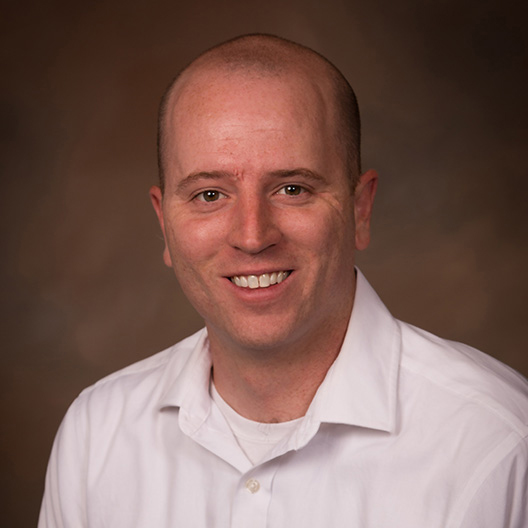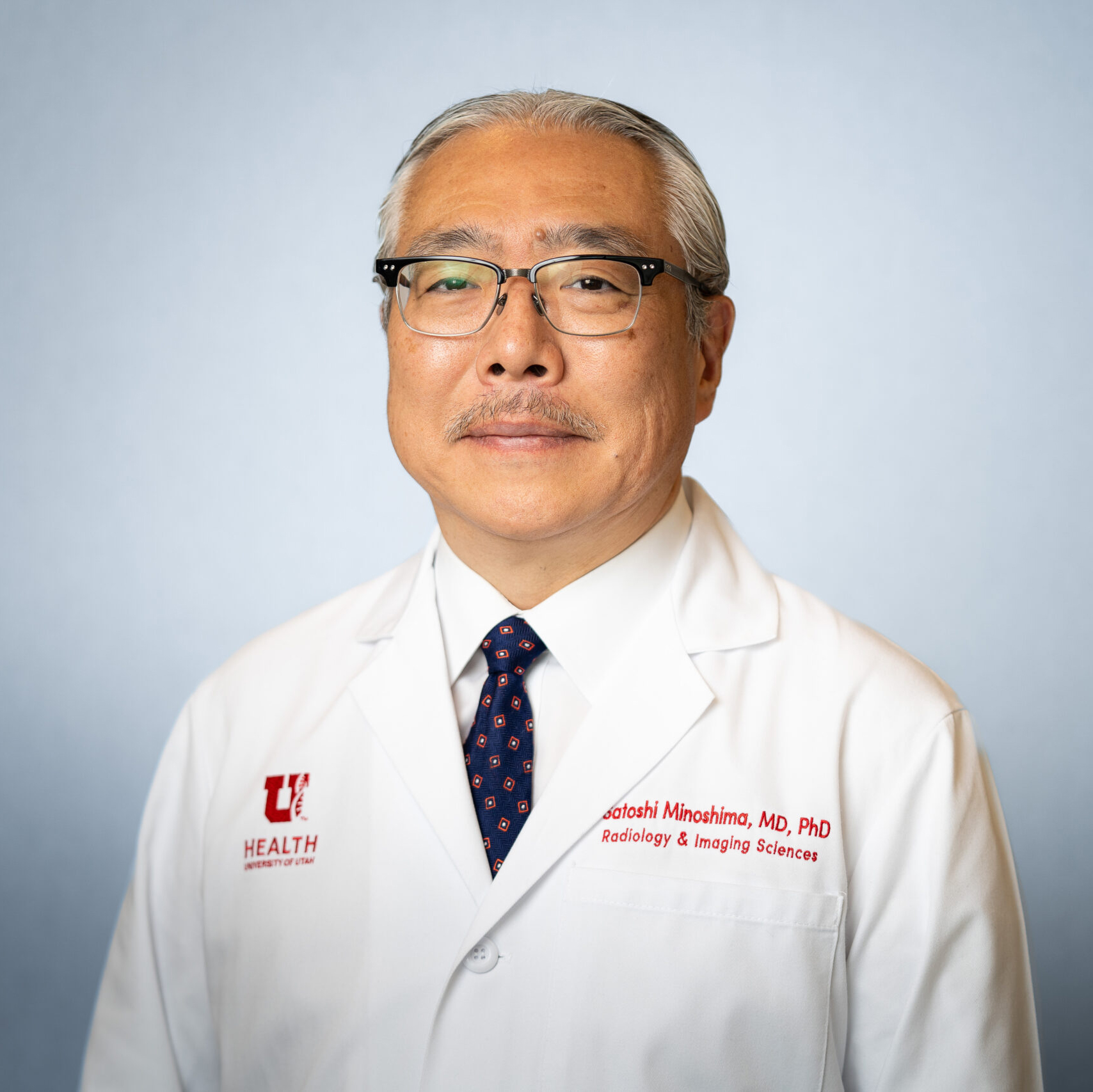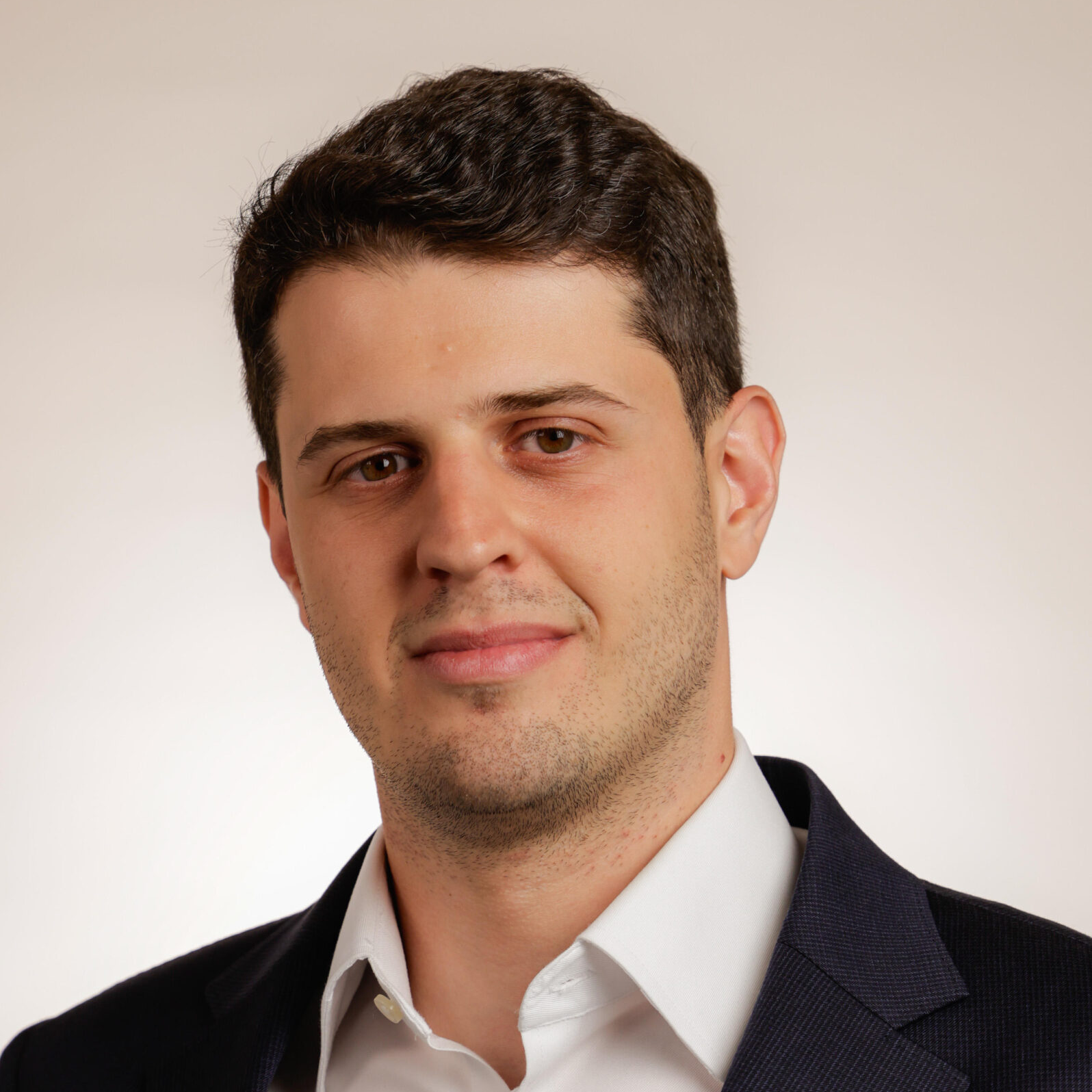What are you trying to do? Articulate your objectives using absolutely no jargon.
I’m a neurologist and an amateur astronomer, interested in combining my profession with my hobby by being involved in the field of space neurology. I am interested in furthering humanity’s understanding about space neurology and how to mitigate known neurological adverse effects in astronauts.
How is it done today, and what are the limits of current practice?
Currently our understanding about space neurology is very limited, and only very few neurologists are knowledgeable about what we know in this field.
What is new in your approach and why do you think it will be successful?
I am currently involved in staying updated on the latest research about space neurology, and educating neurologists and astronomers about this field so that more neurologists are aware and prepared for future increase in space travel and the potential they will be involved in this.
Who cares? If you are successful, what difference will it make?
Neurological symptoms and complications are very common among astronauts, by improving our understanding of space neurology we are able to better help astronauts with these symptoms which can greatly enhance the experience of space travel.
What are you trying to do? Articulate your objectives using absolutely no jargon.
Measure kinetics for high temperature surface reactions responsible for etching, sublimation, and passivation of materials like carbon, ultra-high temperature ceramics (e.g. HfC).
How is it done today, and what are the limits of current practice?
Arc or plasma torches, or oven/furnace methods. Typically measure phenomenological rates for mass loss or oxide layer thickening. Oven/furnace methods limited in upper temperature acheivable.
What is new in your approach and why do you think it will be successful?
We trap single particles in the gas phase, laser heat, measure temperature by emission spectroscopy, and determine reaction rates by measuring particle mass loss. Single particle work is complemented by surface science and microscopy measurements.
Who cares? If you are successful, what difference will it make?
There is interest in developing and modeling materials for non-ablative thermal protective layers, and our work provides rates for microscopic reactions involved in etching, sublimation, oxide decomposition/desorption, and passivation as a function of temperature.
What are you trying to do? Articulate your objectives using absolutely no jargon.
We undertake experiments to study the interactions of fluids and surfaces in relative motion. Our goal is to enable quieter and energy-efficient vehicles in aerospace and naval applications.
How is it done today, and what are the limits of current practice?
Most technologies in practice today are based on laboratory based investigations which are usually scaled studies under simplified conditions. To study them at full scale is very expensive and is not amenable for repetitive and controlled investigations.
What is new in your approach and why do you think it will be successful?
Our approach uses atmospheric flows over unique natural surfaces to mimic the vehicle flows, that translate to full scale and realistic scenarios.
Who cares? If you are successful, what difference will it make?
If successful, the datasets obtained will be used to validate cutting edge computational models. This in turn will enable batch testing of several candidates for noise reduction and energy efficiency. This will further enable practical technologies that will translate to enhanced public health, climate preservation, military superiority, and tax dollar savings.
What are you trying to do? Articulate your objectives using absolutely no jargon.
Ensure the health and well-being of all aerospace workers.
How is it done today, and what are the limits of current practice?
We can direct the setup and integration of a thorough employee clinic within the University of Utah healthcare system to provide timely and exceptional care.
What is new in your approach and why do you think it will be successful?
Work collaboratively with the University of Utah.
Who cares? If you are successful, what difference will it make?
To protect all aerospace workers throughout their career.
What are you trying to do? Articulate your objectives using absolutely no jargon.
I am an engineer and neuroscientist in the field of Radiology with 25 years of experience using imaging to study neurodegenerative disease and CNS disorders and developing creative methods to investigate brain function. My research goal is to make a significant impact on therapeutic and diagnostic options for neurological disorders. I pioneered research at the University of Washington that applied low dose microtubule stabilizers via intranasal administration to treat Alzheimer’s disease and brain injury. At the University of Utah, I partnered with world-experts in therapeutic drug delivery to advance this idea with a novel polymer-drug compound.
How is it done today, and what are the limits of current practice?
Treatments for neurodegenerative diseases and neuronal injuries are few and have limited effectiveness.
What is new in your approach and why do you think it will be successful?
Our therapeutic approach stabilizes microtubules with targeted delivery to the CNS. Microtubule function not only underlies the neuronal cytoskeleton and is critical for essential processes such as axonal transport, but also other structural and functional aspects of brain function such as astrocyte blood-brain-barrier integrity and microglia motility and proliferation.
Who cares? If you are successful, what difference will it make?
If we succeed in slowing or reversing neurodegeneration it will significantly impact CNS health for millions, perhaps billions of people worldwide.
What are you trying to do? Articulate your objectives using absolutely no jargon.
Apply Human Factors focus to Aerospace Hub
How is it done today, and what are the limits of current practice?
Human Factors is critical for full integration of human operators and technical systems. It is considered standard industry practice to apply HF considerations even in the earliest design stages.
What is new in your approach and why do you think it will be successful?
N/A
Who cares? If you are successful, what difference will it make?
The main difference is that a system can be designed safely or not. Application of HF increases the safety of systems overall.
What are you trying to do? Articulate your objectives using absolutely no jargon.
My lab focuses on building and designing materials for extreme aerospace/space environments, with applications from rocket engines to extra-terrestrial habitats.
How is it done today, and what are the limits of current practice?
Low throughput techniques that limit materials design.
What is new in your approach and why do you think it will be successful?
Using high-throughput techniques to accelerate materials design for aerospace and space applications.
Who cares? If you are successful, what difference will it make?
NASA and many space/aerospace companies. Facilitate reusability of rocket engines to launch payloads as well as help with deep space missions.
What are you trying to do? Articulate your objectives using absolutely no jargon.
Understand thermal transport properties of materials at ultrahigh temperatures.
Find new materials that can withstand ultrahigh temperatures with extreme (either high or low) thermal conductivities.
How is it done today, and what are the limits of current practice?
Current theoretical methods are good for low temperatures, and will fail in predicting thermal transport behavior at ultrahigh temperatures.
What is new in your approach and why do you think it will be successful?
We develop new atomic simulations and explore the deep physics of thermal transport at ultrahigh temperatures. From that, we design new materials with desired properties.
Who cares? If you are successful, what difference will it make?
Thermal management of hypersonic vehicles, thermal barrier coatings of gas turbines.
What are you trying to do? Articulate your objectives using absolutely no jargon.
We want to be able to detect, diagnose, and locate electrical faults in aircraft wiring and interconnection systems. We can do this today (but the system would be best if integrated into the system at the design stages. We would like to expand this to use with batteries and electrical storage systems. In addition, we want to be able to predict (prognose) electrical problems in advance of them becoming catastrophic failures.
How is it done today, and what are the limits of current practice?
Today, this could be done with spread spectrum time domain reflectometry (SSTDR) IF it can be integrated with the aircraft (generally from the design stage). It can also be used after market, but has more limitations that way.
What is new in your approach and why do you think it will be successful?
SSTDR can test on electrical systems while they are live / energized and fully functional without requiring turning the system off and disconnecting the loads.
Who cares? If you are successful, what difference will it make?
This could greatly improve aircraft (and other types of) electrical maintenance.
What are you trying to do? Articulate your objectives using absolutely no jargon.
1. Realize a large-scale (1000’s) lane-based UAS traffic management system that provides: (1) Strategic deconfliction, (2) localized contingency handling, (3) anomalous flight detection, (4) dynamic lane creation and lane warping, and (5) traffic management policy calibration (e.g., UAS speeds, safety headway, etc.).
2. Develop autonomous UAS agents.
How is it done today, and what are the limits of current practice?
1. There is an ad hoc approach to strategic deconfliction, and flights are allowed to design their own 3D trajectories. No traffic management system is in common (if any!) use.
2. Autonomous UAS are not adequately robust or reliable.
What is new in your approach and why do you think it will be successful?
1. The lane-based approach has been demonstrated both in simulation, and we are now performing calibration experiments with UAS in the field.
This work has been supported by both the Utah Dept of Transportation as well as the US Air Force.
Who cares? If you are successful, what difference will it make?
This will allow large-scale UAS deployment for package delivery, inspection, medical supply delivery, postal service, etc. This would have large economic and social impact.
What are you trying to do? Articulate your objectives using absolutely no jargon.
My research group develops models for the mechanical behavior of materials using experimental methods, microstructure characterization, and machine learning.
How is it done today, and what are the limits of current practice?
Material models are currently developed with a heavy reliance on mechanical testing, which limits our ability to introduce new materials and manufacturing methods into the market quickly and efficiently.
What is new in your approach and why do you think it will be successful?
Machine learning, guided by the principles of mechanics and physics, has already been demonstrated to develop more accurate models while reducing the heavy reliance on mechanical testing.
Who cares? If you are successful, what difference will it make?
If successful, next-generation materials and structures can be certified faster, accelerating the introduction of, for example, new vehicles for urban air mobility (travel).
What are you trying to do? Articulate your objectives using absolutely no jargon.
Observe, aggregate, and disseminate weather observations and simulate atmospheric flows relevant for unmanned aerial flights.
How is it done today, and what are the limits of current practice?
Operational atmospheric prediction models have insufficient detail for planning drone flight operations.
What is new in your approach and why do you think it will be successful?
Simulations of boundary layer flows at 5 meter resolution using GPU computing systems have been shown to have potential for providing the detail required for predicting winds affecting drone operations.
Who cares? If you are successful, what difference will it make?
Obtaining atmospheric parameters from drones coupled with improved modeling will improve the safety and reliability of drone operations.
What are you trying to do? Articulate your objectives using absolutely no jargon.
My research group is building a miniature chemical analyzer called Microfabricated Organic Analyzer for Biosignatures (MOAB) to search for signs of life on icy moons in our solar system. The MOAB detects organic molecules in water samples from places like Enceladus and Europa. We have also adapted it to monitor astronaut health during space missions. Our group has already tested a prototype in zero gravity and proven it can accurately analyze samples under various gravitational conditions.
How is it done today, and what are the limits of current practice?
Traditional spacecraft analyzers are large and power-hungry, with limited ability to detect multiple organic molecules simultaneously, while the new MOAB system miniaturizes this capability using microfluidics to enable more comprehensive chemical analysis with less mass and power consumption.
What is new in your approach and why do you think it will be successful?
The MOAB introduces a miniaturized microfluidic system that can simultaneously detect multiple organic molecules (amines, amino acids, carboxylic acids) in tiny sample volumes, while consuming minimal power and mass – making it ideal for space missions. Its success is already demonstrated through zero-gravity testing, where it maintained accurate analysis capabilities regardless of gravitational conditions, and it’s versatile enough to be adapted for monitoring astronaut health during space missions.
Who cares? If you are successful, what difference will it make?
This technology could revolutionize how we search for life beyond Earth by enabling detailed chemical analysis of icy moons like Enceladus and Europa, potentially answering one of humanity’s biggest questions: are we alone in the universe? Additionally, its application to astronaut health monitoring could make long-duration space missions safer by providing real-time medical diagnostics in space.
What are you trying to do? Articulate your objectives using absolutely no jargon.
In my lab, we quantify material behavior under extreme conditions using a variety of novel tools and imaging techniques. The materials investigated have applications in impact mitigation, vehicle weighting, solider protection, and nuclear energy production.
How is it done today, and what are the limits of current practice?
The information that can be extracted during high strain-rate experiments is limited due to the short timescales involved. Timescales range from 100 nanoseconds to milliseconds, making it difficult to obtain precise full-field measurements. Furthermore, most high strain-rate experiments are conducted under ambient conditions, which do not reflect the application temperatures to which the obtained data is applied.
What is new in your approach and why do you think it will be successful?
We focus on maximizing the output of each experiment conducted through the incorporation of as many diagnostic tools as possible. Typically we integrate precise specimen heating, real-time temperature measurement (>1M samples/second), and full-field imaging. Using these tools, we push forward our understanding of material behavior to allow for greater modeling fidelity.
Who cares? If you are successful, what difference will it make?
The work done in our lab broadly benefits society by identifying candidate materials that provide improved fuel efficiency, reduce greenhouse gas emissions, secure energy futures through advancing next-generation nuclear reactor technology, and ensure the safety of soldiers and military vehicles.
What are you trying to do? Articulate your objectives using absolutely no jargon.
TBD
How is it done today, and what are the limits of current practice?
TBD
What is new in your approach and why do you think it will be successful?
TBD
Who cares? If you are successful, what difference will it make?
TBD
What are you trying to do? Articulate your objectives using absolutely no jargon.
My work focuses on understanding and predicting the cognitive and motor deficits in aging and neurodegeneration. I use neuropsychological testing and motor behavioral assessments to map behavioral profiles. Using magnetic resonance imaging I evaluate the relationship between functional and structural brain aspects with these behavioral profiles. In previous work, I assessed how cognitive, motor, and brain health are affected by spaceflight and if brain metrics can predict post-landing task performance.
How is it done today, and what are the limits of current practice?
Most work today focuses on a limited number of behavioral assessments that are being evaluated using mass univariate analyses. This overlooks correlational structures between behavioral assessments and may be less powerful in detecting brain-behavioral associations.
What is new in your approach and why do you think it will be successful?
I extract motor and cognitive profiles using supervised machine learning tools. This takes advantage of the breadth of motor and cognitive functioning and can identify those individuals who are most affected by the effects of microgravity on the central nervous system due to spaceflight.
Who cares? If you are successful, what difference will it make?
Identifying those individuals whose cognitive and motor performance is most affected by spaceflight could be selected for training to mitigate such effects.
What are you trying to do? Articulate your objectives using absolutely no jargon.
Research focuses on control systems, robotics, uncrewed aerial vehicles, machine learning, mobile robots, and estimation theory.
How is it done today, and what are the limits of current practice?
N/A
What is new in your approach and why do you think it will be successful?
Our group leverages advanced control system design, probabilistic techniques, and estimation and machine learning algorithms for autonomy.
Who cares? If you are successful, what difference will it make?
Applications for search and rescue, environmental monitoring, etc.
What are you trying to do? Articulate your objectives using absolutely no jargon.
Improve the processes of architecting and designing aerospace systems.
How is it done today, and what are the limits of current practice?
It is done today through a mixture of rigorous practices from legacy disciplines, text document descriptions, simulation models, and a mixture of more structured tools. Current practice relies on users and sponsors have a very clear understanding of their needs and the ability to express them clearly to developers, or for developers to have keep knowledge of the operational domain. Complexity frequently gets out of control and results in unexpected cost and schedule overruns.
What is new in your approach and why do you think it will be successful?
What is new is an organized and systematized combination of structured modeling, explicit heuristics, evolutionary development patterns, and analysis methods.
Who cares? If you are successful, what difference will it make?
The goals are two fold. First, to use heuristics, patterns, and model-based methods to make current best practice the normal practice. These methods should make routine what we do only with the best teams today. Second, consistent model representation practices and making explicit the heuristic elements will provide opportunities for continuous improvement through data analysis that is not now possible.
What are you trying to do? Articulate your objectives using absolutely no jargon.
Advance medical imaging for people in space. Help develop methods to protect humans from cosmic radiation.
How is it done today, and what are the limits of current practice?
Cross-sectional imaging devices, essential for medical care, are challenging to implement and operate in space and on other planets due to their size, complexity, and durability requirements. Humans will be exposed to higher levels of radiation during space travel and potentially on other planets.
What is new in your approach and why do you think it will be successful?
Industry collaboration and brainstorming to develop new imaging devices that can be operated in spaceships and on other planets. Help develop small molecule drugs that make cells more resistant to radiation. Also, help devise radiation protection methods in space.
Who cares? If you are successful, what difference will it make?
Help support health and healthcare for people in space.
What are you trying to do? Articulate your objectives using absolutely no jargon.
Develop simulation and modeling strategies to improve chemically reacting flow predictions.
How is it done today, and what are the limits of current practice?
Current models are often insufficiently general, inaccurate, and expensive.
What is new in your approach and why do you think it will be successful?
My group leverages physical insights combined with state-of-the-art computing techniques to achieve better models.
Who cares? If you are successful, what difference will it make?
Better models will lead to faster, cheaper design of advanced propulsion systems and hypersonic vehicles.







